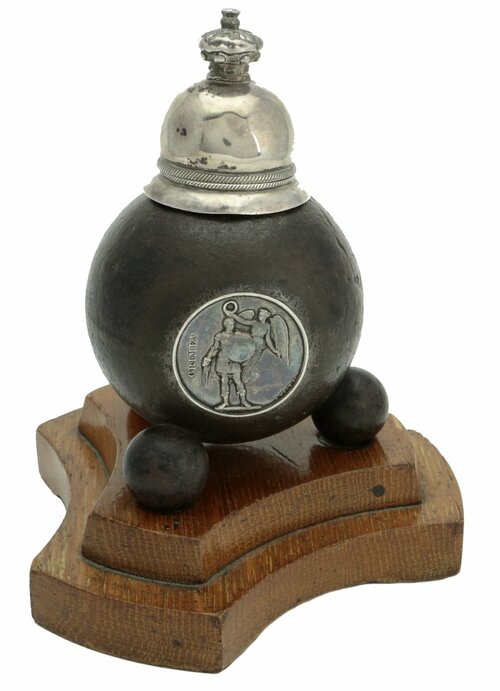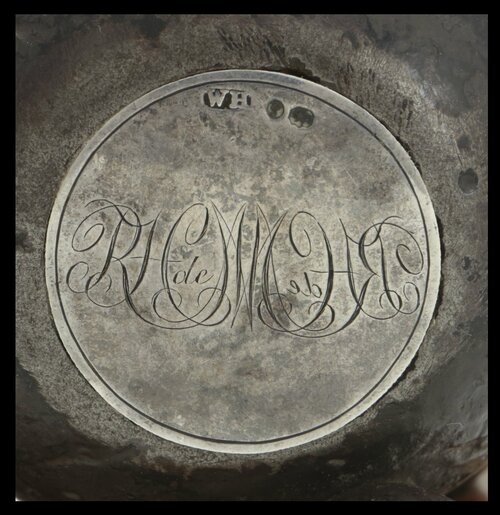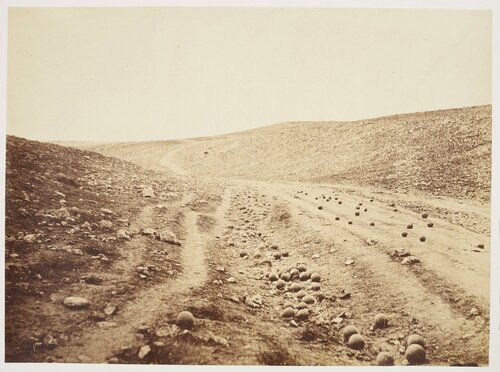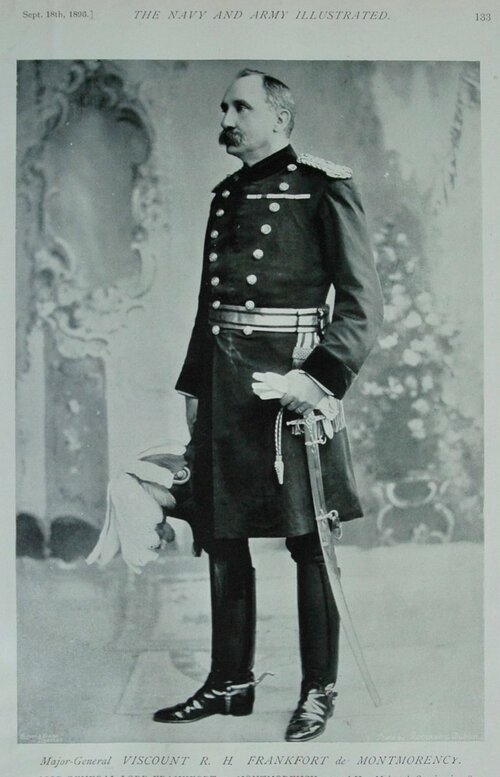Auction: 22001 - Orders, Decorations and Medals
Lot: 616
The fascinating Victorian Inkwell with a V.C. connection, fashioned from a Crimean cannonball and commissioned by Major-General Viscount R. Frankfort De Montmorency, who was recommended for the Victoria Cross at the Redan Redoubt, and whose son won the award with the 21st Lancers at Omdurman
Round Shot, 2.7 inches diameter, hollowed out, with an ornate silver cap atop, hallmarks for London 1857, the shot set on the obverse with a Crimea Medal and on the reverse with a plate engraved with the cypher of Viscount Frankfort De Montmorency, three grape-shot 'legs' 0.9 inches diameter affixed beneath, with - but not affixed to - its original wooden stand, somewhat dented in places but overall very fine
Raymond Harvey de Montmorency, 3rd Viscount Frankfort de Montmorency, was born at Theydon Bower, Essex on 21 September 1835. The only son of Viscount Lodge Raymond de Montmorency, 2nd Viscount Frankfort de Montmorency and Georgina Frederica de Montmorency, the daughter of Peter Fitzgibbon Henchy Q.C. of Dublin. The young De Montmorency was educated at Eton before entering the Royal Military College, Sandhurst being commissioned Ensign with the 33rd (Duke of Wellington's) Regiment of Foot on 18 August 1854. Further promoted Lieutenant on 12 January 1855 he was serving in that rank on the outbreak of the Crimean War. De Montmorency entered the war in the trenches of Sevastopol and was present for the storming of the Great Redan on 8 September 1855 (Medal and clasp). His gallantry during the attack, which cost the British dearly, he was recommended for the Victoria Cross - although the recommendation was not successful. Instead, his reward was an independent command and he was sent to India for the suppression of the Indian Mutiny and placed in command of a detachment in Central India (Medal and clasp).
Promoted Captain on 29 March 1861, he exchanged into the 32nd Duke of Cornwall's Light Infantry and served as Aide-de-Camp to Major-General Edward Brooke from 6 December 1861-31 December 1864. During this time Brooke was commanding troops in the Windward and Leeward Islands. Following this De Montmorency moved on to become Aide-de-Camp to Lieutenant General (later Field Marshal) Sir John Michel commanding the British Forces in North America during the 1866 Fenian Raids (Medal and clasp). Doubtless the logistical difficulties of organising a defence against the raids kept him busy, however he did find time to get married on 25 April 1866 to General Michel's eldest daughter Rachel in Montreal.
De Montmorency also found the opportunity to travel and was in Abyssinia at the time of Napier's expedition; he volunteered privately to take part and was with the army up to the gates of Magdala (Medal). Promoted Major on 28 September 1869 and further advanced Lieutenant-Colonel on 14 June 1876, he served with the British Forces in Egypt and the Sudan from 1886-7. De Montmorency was given the local rank of Major-General in 1887 and commanded the troops at Alexandria before directing a British field column during operations on the Nile for which he received a 'mention'. Promoted Major-General in the British Army on 30 November 1889, he succeeded to the peerage on 25 December of that year upon the death of his father.
Posted to India, the now-Viscount Frankfort de Montmorency was given command of a first-class district in Bengal (1890-1895) and later Dublin District from 1895-1897, retiring on 21 September 1897. The next year, his son Lieutenant Raymond de Montmorency, 21st Lancers, went on to serve at the Battle of Omdurman on 2 September 1898. During the fighting he was awarded the Victoria Cross for his bravery in attempting to rescue Lieutenant Grenfell who had been unhorsed. Driving away the Dervishes around him he found the Lieutenant already dead, rescuing the body and placing it upon a horse; with the assistance of two other men he cut his way free. Promoted Captain on 2 August 1899, the young De Montmorency raised his own company - Montmorency's Scouts - for the Boer War but was killed in action at the Battle of Stormberg. His father died on 7 May 1902 of apoplexy at Bury Street, London and was buried at Dewlish, Dorsetshire. The titles passed to his younger son Willoughby John Horace de Montmorency; sold together with copied research including a biography of the 3rd Viscount de Montmorency and his entry in the Dictionary of National Biography, 2nd Supplement, Volume I.
Subject to 20% VAT on Buyer’s Premium. For more information please view Terms and Conditions for Buyers.
Estimate
£2,400 to £2,800
Starting price
£2100











